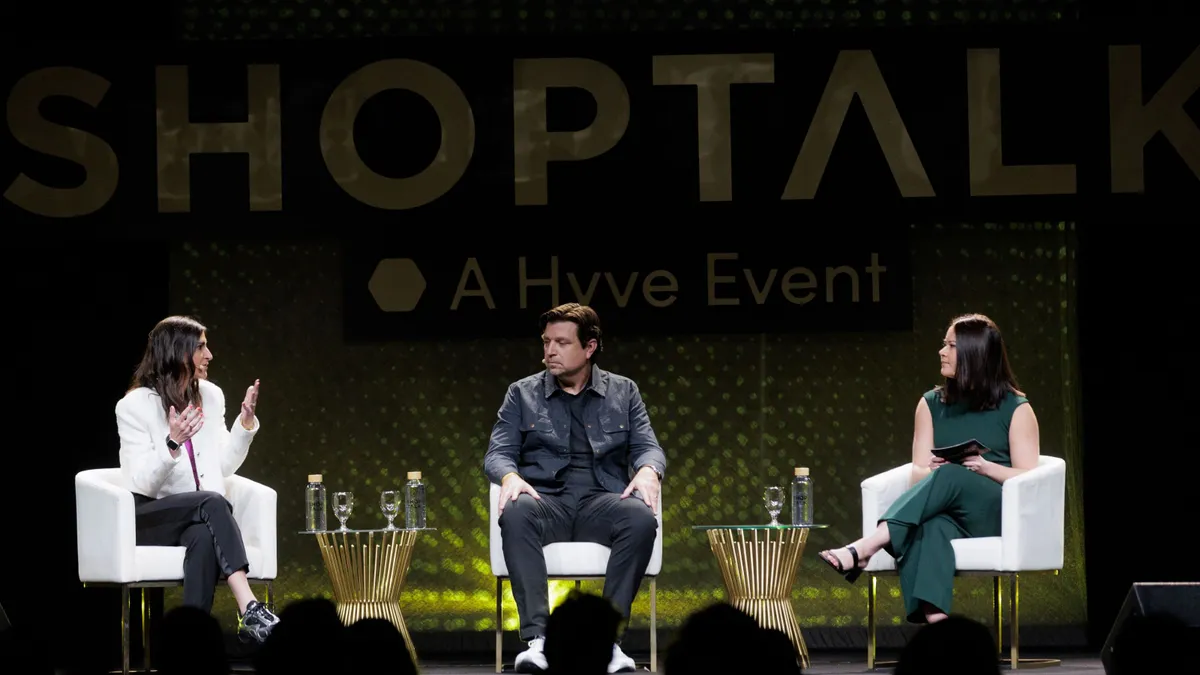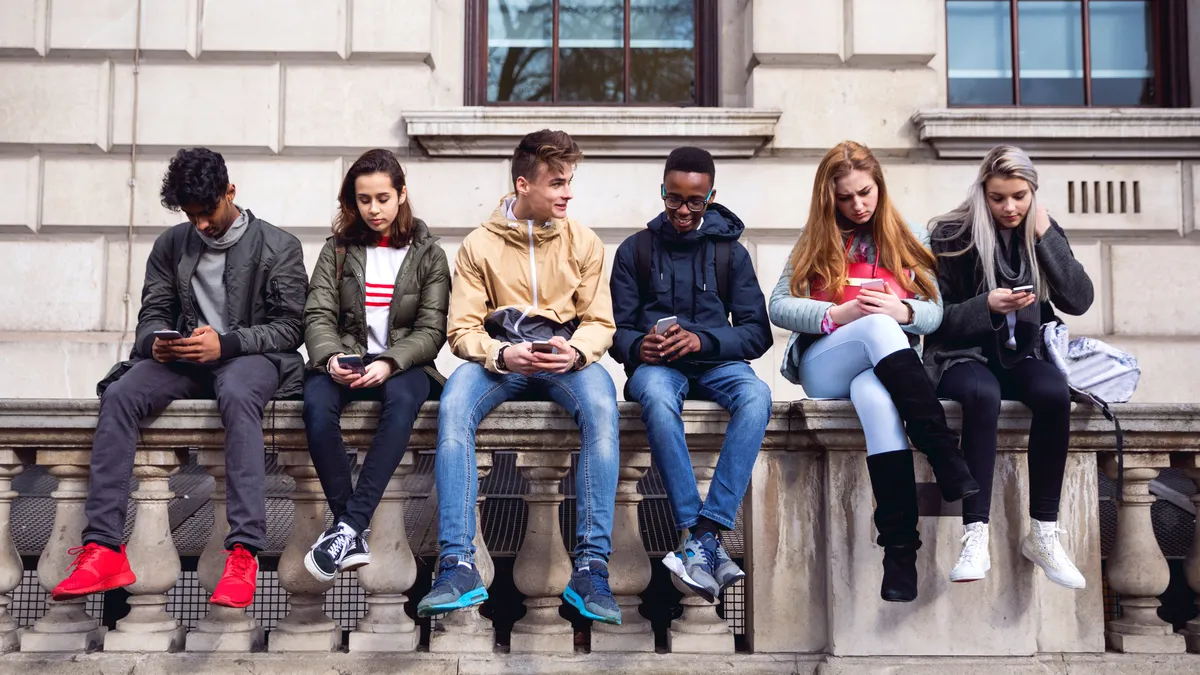Every holiday season, retailers and marketers are swamped by a deluge of reports trying to pinpoint shoppers' behaviors and trends.
But if wading through this sea of data points and analyst predictions can feel overwhelming, look no further. Here are the most important charts to tell the full story of the 2015 holiday shopping season — from the waning importance of Black Friday to shoppers' online behavior.
The big picture: What the 2015 holiday season has in store
If there's one clear takeaway from all the projections leading up to the 2015 holiday shopping season, it's that change is the new normal.
“There is a real sea change happening in retail when it comes to the how, when, where, and why of holiday shopping," said NRF President and CEO Matthew Shay.
Many analysts are predicting a drop in retail sales this holiday season as consumers shift their demand from goods to services. NRF Chief Economist Jack Kleinhenz told Bloomberg that the retail trade association is seeing consumers spend more on travel and tax preparation, which may limit their spend on holiday gifts.
“Consumers have shifted some of their demand toward services and away from goods,” Kleinhenz told Bloomberg. “Consumers are buying things — there’s no doubt about it. They’re spending money on autos, on big-ticket items, and we’ve seen a big pickup in restaurants and personal services.”
But while total retail sales may see a dip this year, online sales growth is projected to be strong, continuing to outpace overall retail growth.
The growth of e-commerce may spell trouble for traditional brick-and-mortar retailers who mainly depend on foot traffic to boost their sales during the crucial holiday season.
And the news for traditional retailers gets worse when you take into account perhaps the biggest winner from the shift online: Amazon. According to a new poll from Reuters/Ipsos, 51% of Americans are planning to do most of their holiday shopping on Amazon, while only 16% plan to buy online at Wal-Mart, 3% at Target, and 2% at Macy's.
As more customers increasingly shop online during the holidays, traditional retailers are struggling to ramp up their e-commerce operations to match the increase in demand. Both Wal-Mart and Target have focused on boosting their online operations as part of their growth strategy, but each reported slower than anticipated e-commerce growth during their most recent earnings reports.
The big deal: Consumer shopping trends
While Black Friday has traditionally been seen as the official start of the holiday season, shoppers are no longer waiting until after Thanksgiving to start crossing off items on their gift lists.
According to the NRF's Consumer Holiday Spending Survey, 56% of shoppers celebrating the holidays this year had already started shopping by early November, up from 54% last year. The two main reasons for consumers to start shopping early are to avoid common concerns many gift givers have: staying within budget and avoiding the holiday crowds.
But while 41% of early shoppers said they plan to shop early because deals before November are "too good to pass up," retailers are promising that the best is yet to come.
Both Gap and Abercrombie announced this holiday season will be heavily promotional, although that may be more due to inventory issues than marketing strategy. Wal-Mart started its holiday "rollbacks" on Nov. 1 and will last 90 days, while Amazon launched its seasonal deals on Nov. 20, which will go on for eight days.
Challenged by the shift to online shopping, retailers have at least one unique weapon in their arsenal to attract sales during the holiday season: Santa. According to the International Council of Shopping Centers, 50% of shoppers with children 13 years old or younger are planning to visit the mall to see Santa. To compete for these shoppers' dollars, malls — and Wal-Mart, which plans to dispatch Santa to 3,600 stores — are souping up their holiday displays this year by adding digital displays and interactive decorations.
But while Santa may boost some holiday sales, retailers still need to be hyper-aware of their stores' appearance and the overall shopping experience — or risk alienating would-be customers.
Wal-Mart has made a concentrated effort to prepare its stores for the season with all the proper holiday accoutrements like tinsel, fake snow, and bells. And beyond the seasonal fluff, the retailer has also succeeded in improving quality of service and cleanliness at its locations in recent months — a sore spot for Wal-Mart in past years and a targeted area of improvement in 2015.
While Amazon and other online competitors remain a real threat for all brick-and-mortar retailers this holiday season and beyond, the vast majority of shoppers still intend to make a holiday purchase at a physical store this season.
The main reasons why shoppers are planning to shop at a physical store are the same reasons they shop in-store throughout the rest of the year: the ability to try on merchandise and avoid shipping costs.
Even if customers are shopping in-store, holiday shoppers will be influenced by online interactions, with 69% likely to browse online before visiting a store, according to Accenture.
Retailers have been launching their own online and mobile operations to facilitate this webrooming (and showrooming) behavior. Target and Wal-Mart both have features in their apps to facilitate shoppers' wish lists, while Kohl's new app includes "Store Tools" that gives out personalized offers to shoppers in stores.
But no matter the outlet, discounts remain king when it comes to choosing a new retailer to shop both online and in person.
The big question: Is Black Friday losing its importance?
While Black Friday remains one of the most important days of the year for retail sales, the "day" is starting to evolve, driven in part by the increasing influence of Cyber Monday and shifting consumer habits.
Rather than being a shopping treasure hunt to find the best deals of the year, some shoppers now see Black Friday as disappointing and even dangerous. According to deal site BestBlackFriday.com, 79% of shoppers don't enjoy Black Friday.
Rather than focusing their shopping on one day or weekend, consumers are spreading their shopping to the weeks and even months leading up to the December holidays. In response, retailers are drawing out their usual Black Friday-only deals to days, and sometimes weeks, before and after the event.
“[I]n general, we see retailers relying less on this ‘scarcity’ thing, instead saying ‘We have a good deal for everybody that comes,’” Jason Goldberg, VP of commerce at digital marketing firm Razorfish and blogger at RetailGeek.com, told Retail Dive.
While some retailers are sticking to their guns by opening on Thanksgiving — with Target claiming it's a “tradition” for some families — many consumers are increasingly turned off by the idea.
In response to this trend, some retailers have scaled back the Black Friday "creep" that analysts have observed in recent years, where stores open earlier and earlier on Thanksgiving day. Target will keep its opening time at 6 p.m., the same as last year, while Wal-Mart will offer many of its in-store Black Friday deals online starting at 12:01 a.m. PST on Thanksgiving. Amazon is upping the ante even further with 8 days of deals, which will roll out throughout the week to encourage shoppers to visit its site regularly.
It's all pointing to the overall diminishing of Black Friday as the most important shopping day of the year.
“I expect to see Black Friday probably be not as much of an event [in brick-and-mortar stores] as it used to be,” eMarketer retail analyst Yoram Wurmser told Wired. “People are going more for experiences rather than products. I think that’s having an effect on some of these traditional retailers as well.”




















